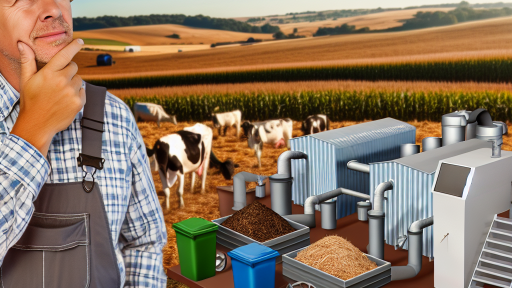Introduction to Biodiversity and Soil Health
Defining Biodiversity
Biodiversity encompasses the variety of life on Earth.
It includes different species of plants, animals, and microorganisms.
Furthermore, biodiversity refers to the genetic differences within these species.
The Importance of Biodiversity in Ecosystems
Biodiversity plays a crucial role in maintaining healthy ecosystems.
It supports ecosystem functions like nutrient cycling and pollination.
Additionally, diverse ecosystems tend to be more resilient to changes.
Understanding Soil Health
Soil health refers to the ability of soil to sustain plant and animal life.
Healthy soil promotes plant growth and stores carbon effectively.
Moreover, it helps filter water and provides habitat for numerous organisms.
Linking Biodiversity to Soil Health
Biodiversity is essential for enhancing soil health.
It increases the variety of organisms that contribute to soil functions.
For instance, diverse microbial communities improve nutrient availability.
They also help in breaking down organic matter, enriching the soil.
The Impact of Soil Biodiversity
Soil biodiversity directly influences soil structure and function.
Diverse organisms, such as earthworms and fungi, help aerate the soil.
Transform Your Agribusiness
Unlock your farm's potential with expert advice tailored to your needs. Get actionable steps that drive real results.
Get StartedThis process improves water infiltration and root development.
Practices to Enhance Biodiversity and Soil Health
Adopting sustainable agricultural practices fosters soil biodiversity.
For example, crop rotation increases species diversity in fields.
Cover crops can enhance soil structure and nutrient content.
Moreover, reducing chemical inputs supports beneficial soil organisms.
The Interconnection Between Biodiversity and Soil Ecosystems
Understanding Soil Biodiversity
Ssoil biodiversity encompasses a variety of organisms within the soil ecosystem.
These organisms include bacteria, fungi, protozoa, and larger fauna like earthworms.
Each species plays a unique role in maintaining soil health and fertility.
Moreover, the interactions among these organisms create a complex web of life.
The Role of Microorganisms
Microorganisms are crucial drivers of nutrient cycling in the soil.
They decompose organic matter, releasing essential nutrients into the soil.
This process enhances soil structure and improves fertility.
Furthermore, beneficial microbes can protect plants from pathogens.
Impacts of Biodiversity on Soil Health
Diverse soil ecosystems exhibit greater resilience to environmental changes.
Biodiversity aids in soil moisture retention, promoting plant growth during droughts.
Moreover, a varied soil community can suppress pests and diseases.
This results in less reliance on chemical pesticides.
Human Actions and Soil Biodiversity
Modern agricultural practices often diminish soil biodiversity.
Overuse of fertilizers and pesticides disrupts microbial communities.
This degradation negatively impacts soil health and agricultural productivity.
Restoring soil biodiversity can lead to more sustainable farming practices.
Strategies for Enhancing Soil Biodiversity
Implementing crop rotation promotes diverse plant species in the soil.
Cover cropping can enhance soil structure and support microbial life.
Minimizing soil disturbance preserves the habitats of soil organisms.
Showcase Your Farming Business
Publish your professional farming services profile on our blog for a one-time fee of $200 and reach a dedicated audience of farmers and agribusiness owners.
Publish Your ProfileAdditionally, organic farming practices help foster a thriving soil ecosystem.
Types of Biodiversity Essential for Soil Health
Genetic Diversity
Genetic diversity ensures resilience in plant and microbial species.
This diversity allows crops to adapt to changing environmental conditions.
It also promotes a balanced soil ecosystem.
Species Diversity
Species diversity includes various organisms such as plants, animals, and microorganisms.
Each species has a unique role in soil fertility and structure.
For instance, earthworms improve soil aeration and nutrient cycling.
Functional Diversity
Functional diversity refers to the different biological roles within an ecosystem.
This includes decomposers, producers, and nitrogen-fixing organisms.
Each functional group contributes to soil health in specific ways.
For example, decomposers break down organic matter into nutrients.
Importance of Biodiversity in Soil Management
Diverse soil organisms enhance nutrient availability and retention.
They also help suppress soil-borne diseases and pests.
Furthermore, biodiversity improves soil structure and porosity.
This fosters better water infiltration and root growth.
Strategies to Enhance Soil Biodiversity
- Implementing crop rotation to promote diverse plant species.
- Using cover crops to provide habitats for beneficial organisms.
- Incorporating organic matter, such as compost and mulch.
These strategies create a thriving ecosystem that supports sustainable soil health.
Learn More: Precision Irrigation Systems for Modern Farms
Impacts of Loss of Biodiversity on Soil Quality
Essential Soil Organisms
Soyl biodiversity includes numerous organisms, such as bacteria, fungi, and earthworms.
These organisms are crucial for nutrient cycling and organic matter decomposition.
Without them, soil quality deteriorates rapidly.
Additionally, the absence of these organisms limits soil fertility.
Impact on Water Retention
Biodiverse soils retain water better than degraded soils.
Many organisms create channels in the soil, allowing for moisture retention.
In contrast, a lack of biodiversity leads to compacted soil.
This compacted soil results in poor water infiltration and increased runoff.
Soil Structure and Stability
Healthy soil structure depends on diverse biological activity.
Soil organisms contribute to the formation of aggregates.
These aggregates enhance soil aeration and stability.
When biodiversity declines, soil becomes prone to erosion.
Consequently, soil loses its ability to support plant life.
Resilience to Pests and Diseases
Biodiverse soils foster a balance that helps regulate pests and diseases.
For instance, certain soil microbes can suppress harmful pathogens.
Loss of biodiversity disrupts these natural controls.
This disruption can lead to increased crop losses.
Farmers often resort to chemical treatments to manage outbreaks.
Carbon Sequestration Challenges
Diverse soil ecosystems play a critical role in carbon sequestration.
Microbial activity helps store carbon in the soil.
However, biodiversity loss reduces this capacity significantly.
As a result, more carbon remains in the atmosphere.
This contributes to climate change and global warming.
Showcase Your Farming Business
Publish your professional farming services profile on our blog for a one-time fee of $200 and reach a dedicated audience of farmers and agribusiness owners.
Publish Your ProfileSocial and Economic Consequences
The decline in soil health affects agricultural productivity.
Poor soil quality leads to lower yields and higher production costs.
This situation places economic strain on farmers.
Ultimately, it can threaten food security in vulnerable regions.
Explore Further: Reducing Carbon Footprint with Sequestration in Agriculture
Role of Microorganisms in Soil Fertility and Structure
Importance of Microorganisms
Microorganisms are vital to the health of soil ecosystems.
They significantly enhance soil fertility and structure.
Beneficial bacteria and fungi decompose organic matter efficiently.
This decomposition process releases essential nutrients.
Additionally, microorganisms improve soil aggregation and porosity.
Overall, they create a conducive environment for plant growth.
Types of Beneficial Microorganisms
Bacteria play many roles in soil ecosystems.
Some bacteria fix atmospheric nitrogen, enhancing fertility.
Others break down complex organic compounds into simpler forms.
Fungi, especially mycorrhizal fungi, establish symbiotic relationships with plants.
This symbiosis increases nutrient and water uptake for plants.
Various protozoa also contribute by regulating bacterial populations.
Microorganisms and Soil Structure
Soil structure greatly influences water retention and air circulation.
Microbial activity leads to the formation of soil aggregates.
These aggregates provide better aeration and water infiltration.
Consequently, they reduce soil erosion and compaction.
Healthy soil structure promotes robust root systems in plants.
Enhancing Soil Fertility Through Practices
Farmers can enhance soil fertility using specific practices.
Crop rotation and cover cropping boost microbial diversity.
Organic amendments such as compost support microbial populations.
Integrating these practices leads to improved soil health.
This, in turn, supports sustainable agricultural systems.
Find Out More: Effective Carbon Sequestration Methods for Farms

Biodiversity’s Influence on Soil Nutrient Cycling
The Role of Microorganisms
Microorganisms are essential for nutrient cycling in the soil.
They break down organic matter, releasing nutrients into the ecosystem.
This process enriches the soil and supports plant growth.
Furthermore, diverse microbial communities enhance nutrient availability.
Different species contribute unique enzymatic functions.
This synergy increases the efficiency of nutrient uptake by plants.
Soil Fauna Contributions
Soil fauna also plays a crucial role in nutrient cycling.
Earthworms, for example, aerate the soil and improve drainage.
They also break down organic matter, leading to richer soil.
Additionally, insects and arthropods facilitate nutrient redistribution.
This movement helps prevent nutrient depletion in specific areas.
Plant Biodiversity and Nutrient Uptake
Diverse plant species contribute to soil nutrient cycling.
Showcase Your Farming Business
Publish your professional farming services profile on our blog for a one-time fee of $200 and reach a dedicated audience of farmers and agribusiness owners.
Publish Your ProfileEach species has different rooting depths and nutrient requirements.
This variation promotes a more efficient use of soil nutrients.
Additionally, plants can enhance microbial diversity through root exudates.
These compounds provide food for soil microorganisms, fostering beneficial interactions.
Impacts of Agricultural Practices
Agricultural practices significantly influence soil biodiversity.
Monocultures reduce species diversity and compromise soil health.
Conversely, crop rotation supports a diverse soil ecosystem.
This practice leads to improved nutrient cycling and soil fertility.
Moreover, minimizing pesticide use can benefit microbial communities.
Natural pest control methods promote biodiversity and soil health.
Long-term Benefits of Biodiverse Soils
Soils rich in biodiversity provide long-term agricultural benefits.
They exhibit greater resilience to environmental stressors.
Healthy soils can better retain water and nutrients, improving crop yields.
Additionally, increasing biodiversity enhances soil carbon storage.
This process plays a vital role in combating climate change.
Thus, fostering soil biodiversity is crucial for sustainability.
See Related Content: Benefits of Crop Rotation and Diversity in Farming
Sustainable Practices to Enhance Soil Biodiversity
Understanding Soil Biodiversity
Soil biodiversity includes all living organisms in the soil ecosystem.
This biodiversity plays a critical role in maintaining soil health.
Moreover, it supports essential functions such as nutrient cycling.
Healthy soil biodiversity boosts plant growth and resilience.
Promoting Organic Practices
Organic farming methods enhance soil biodiversity effectively.
These methods avoid synthetic fertilizers and pesticides.
Instead, they focus on natural fertilizers like compost and manure.
Additionally, crop rotation helps maintain nutrient levels in the soil.
Incorporating cover crops increases organic matter in the soil.
Minimizing Soil Disturbance
Reduced tillage practices significantly benefit soil integrity.
Less disturbance maintains soil structure and biodiversity.
For instance, no-till farming preserves the habitat for soil organisms.
This method also reduces erosion and water loss.
Integrating Agroforestry Systems
Agroforestry combines agriculture with forestry practices.
This integration promotes biodiversity by creating diverse habitats.
Planting trees alongside crops enriches the soil ecosystem.
Moreover, it enhances nutrient availability and improves water retention.
Utilizing Diverse Plant Species
Planting a variety of species supports ecological balance.
Diverse root systems promote soil structure and depth.
It also attracts beneficial insects and pollinators.
Furthermore, mixed cropping reduces pest outbreaks and disease.
Implementing Cover Cropping
Cover crops provide numerous benefits to soil health.
They help prevent soil erosion and suppress weeds effectively.
Showcase Your Farming Business
Publish your professional farming services profile on our blog for a one-time fee of $200 and reach a dedicated audience of farmers and agribusiness owners.
Publish Your ProfileThese crops also enhance soil organic matter and fertility.
Common cover crops include clover, vetch, and rye.
Encouraging Microbial Activity
Microbial diversity is vital for healthy soils.
Practices such as composting enhance microbial populations.
Moreover, diverse root exudates stimulate different microbes.
All these efforts contribute to improved nutrient cycling.
Implications of Sustainable Soil Practices
Adopting sustainable practices enriches soil biodiversity.
These methods foster resilient ecosystems and sustainable agriculture.
Moreover, they ensure healthy soils for future generations.
Case Studies: Successful Implementation of Biodiversity in Soil Management
Introduction to Successful Case Studies
Many successful case studies demonstrate biodiversity’s role in soil health.
These examples show how diverse ecosystems enhance soil management practices.
They inspire agricultural communities worldwide to adopt better methods.
Agroforestry Practices in Brazil
In Brazil, agroforestry has transformed degraded lands into productive ecosystems.
This method integrates trees with crops, boosting biodiversity significantly.
Consequently, soil health improved, supporting various plant species.
Farmers report higher yields and resilience against pests.
Community Involvement
The success of these agroforestry systems hinges on community participation.
Farmers collaboratively share knowledge and best practices.
As a result, they foster a sense of stewardship towards their land.
Crop Rotation and Biodiversity in the Netherlands
In the Netherlands, farmers implement diverse crop rotations to improve soil health.
This practice reduces soil erosion and nutrient depletion.
Farmers rotate legumes, grains, and root crops effectively.
Additionally, it controls harmful pests naturally.
Documented Results
Studies indicate increased soil organic matter and improved fertility.
Farmers report reduced reliance on chemical fertilizers.
Ultimately, this leads to more sustainable farming practices.
Restoration of Native Grasslands in the United States
Efforts to restore native grasslands are underway across the United States.
These projects focus on promoting native flora and fauna.
Restoring these ecosystems enhances soil structure and health.
Biodiversity increases soil carbon storage significantly.
Engagement of Local Communities
Local communities actively participate in restoration projects.
They benefit from expanded educational opportunities and hands-on experience.
This collective effort strengthens local economies and ecosystems.
Future Directions in Soil Management
These case studies illustrate the importance of biodiversity in soil management.
They show how diverse agricultural practices contribute to sustainable soil health.
Ultimately, such implementations benefit both the environment and society.




